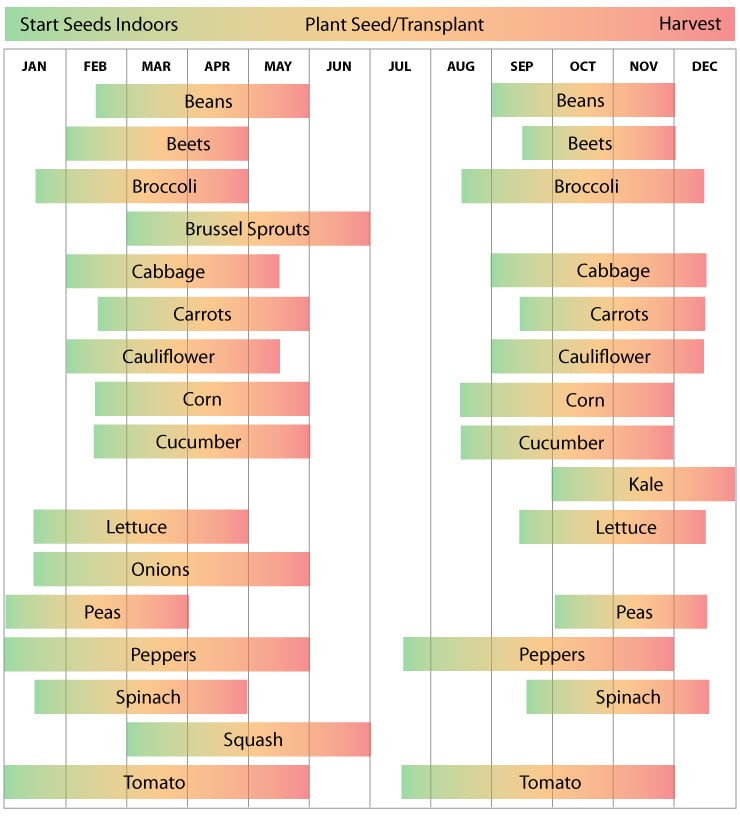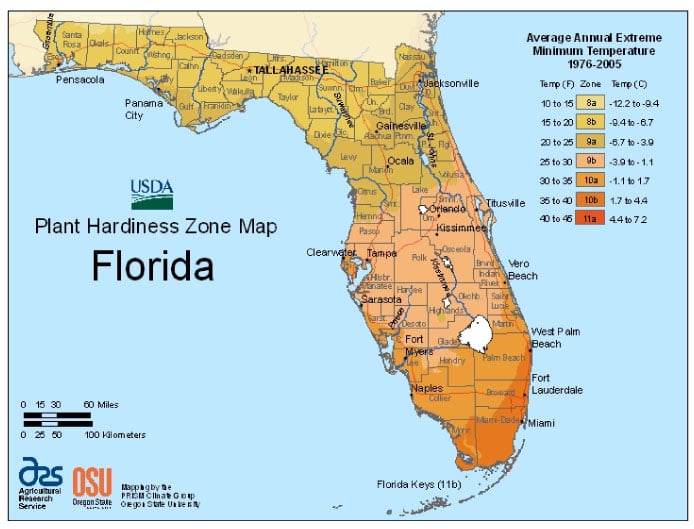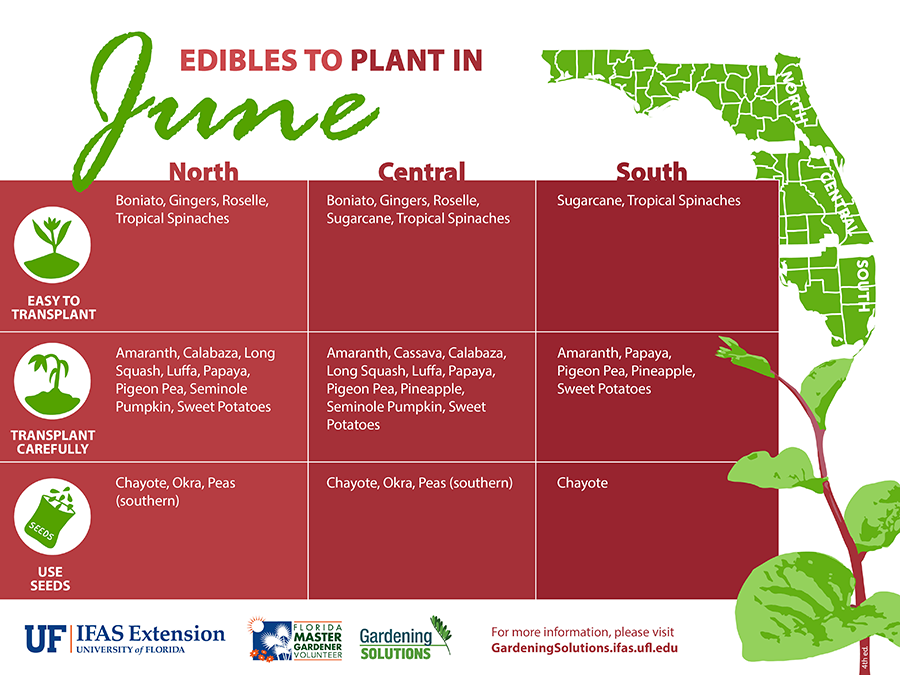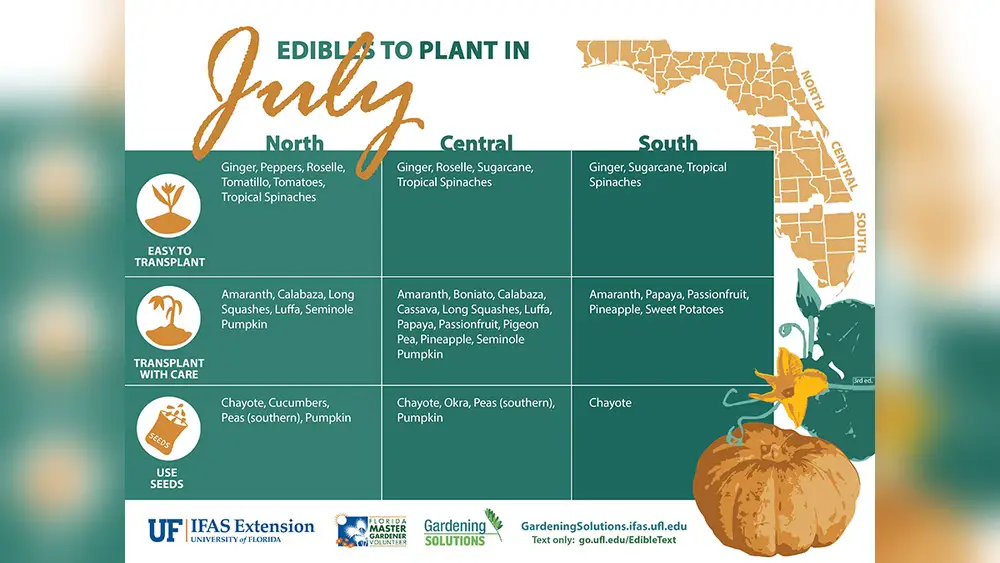If you want to grow fresh, tasty vegetables right in your own backyard, knowing the best months to plant in Florida is key to your success. Florida’s unique climate means your garden needs a carefully planned schedule to thrive.
Plant too early or too late, and your veggies might struggle or fail. But when you time it right, you’ll enjoy a bountiful harvest almost year-round. In this guide, you’ll discover exactly when to plant popular vegetables so you can get the most out of your garden and enjoy fresh produce straight from the soil.
Ready to make your garden flourish? Keep reading to find out the best months to plant vegetables in Florida and turn your garden dreams into reality.
Florida Gardening Seasons
Florida’s unique climate allows gardeners to grow vegetables almost year-round. Understanding the gardening seasons helps plan the best planting times. The state mainly has two gardening seasons: warm and cool. Each season supports different types of vegetables. Knowing these seasons can improve your garden’s success.
Warm Season Overview
The warm season in Florida lasts from late spring to early fall. It is hot and humid, perfect for heat-loving vegetables. Plant tomatoes, peppers, cucumbers, and squash during these months. These plants thrive in warm soil and full sun. Start planting after the last frost date to avoid cold damage. Water regularly to handle Florida’s heat and keep plants healthy.
Cool Season Overview
The cool season runs from late fall to early spring. Temperatures drop, but the weather stays mild compared to other states. This season suits leafy greens and root vegetables. Grow lettuce, broccoli, carrots, and cabbage in this period. These crops enjoy cooler temperatures and shorter days. Plant in October or November for the best results. Protect young plants from occasional cold snaps to ensure growth.

Credit: www.ufseeds.com
Spring Planting Months
Spring is a key time for planting vegetables in Florida. The weather warms up, and the soil becomes ready for new growth. Starting your garden in spring helps plants get a good start before the hot summer arrives. This period allows many vegetables to thrive and produce a healthy harvest.
Vegetables To Plant In March
March is an ideal month to plant many vegetables in Florida. Consider tomatoes, peppers, and eggplants. These warm-season crops grow well after the last frost. Beans and cucumbers also do well when planted in March. Leafy greens like spinach and lettuce can be sown early. Root vegetables such as carrots and radishes can also be started during this month.
Best Practices For Spring Gardens
Prepare the soil by adding compost or organic matter. This improves soil health and water retention. Plant seeds or seedlings at the right depth and spacing. Water your plants regularly but avoid overwatering. Mulching helps keep soil moist and reduces weeds. Watch for pests and take action early to protect your plants. Use natural methods like handpicking or organic sprays when possible.
Summer Planting Tips
Summer in Florida brings intense heat and strong sun. These conditions challenge many gardeners. Growing vegetables successfully during this time requires special care. Planting the right crops and managing water and shade can help plants thrive. Here are some important tips for summer planting in Florida.
Heat-tolerant Vegetables
Choose vegetables that handle heat well. Okra, sweet potatoes, and eggplants do great in hot weather. Peppers and southern peas also grow strong under the sun. Avoid cool-season crops that wilt or stop growing in heat. These heat-tolerant veggies stay productive even in summer’s peak heat.
Managing Water And Shade
Water plants deeply but less often to encourage strong roots. Early morning watering reduces evaporation and leaf burn. Use mulch around plants to keep soil moist and cool. Provide shade using cloth or shade nets during the hottest hours. Shade lowers plant stress and protects tender leaves from sun damage.
Fall Planting Months
Fall planting months in Florida offer a perfect window for growing many vegetables. The cooler weather helps plants thrive without the harsh summer heat. Gardeners can enjoy a bounty of fresh produce by planting at the right time. Timing is key to a successful fall garden in Florida.
October is a prime month for starting cool-season vegetables. These crops grow well as temperatures drop and days get shorter. Preparing your garden for fall planting ensures strong, healthy plants and a steady harvest.
Cool-season Vegetables To Plant In October
October is ideal for planting broccoli, lettuce, carrots, Brussels sprouts, and radishes. These vegetables prefer cooler soil and air temperatures. They develop better flavor and texture when grown in fall. Leafy greens like kale and collards also thrive this month. Onions and garlic can be planted now for a spring harvest. Choose high-quality seeds for best results. Water regularly but avoid overwatering to prevent root rot.
Advantages Of Fall Gardening
Fall gardening reduces stress on plants caused by heat. Pests and diseases tend to be less active during cooler months. Soil moisture is easier to maintain, supporting steady growth. Vegetables planted in fall often taste sweeter and fresher. This season allows for a longer harvest period than summer. Fall gardens can fill the gap when summer crops end. The mild climate makes gardening more enjoyable and less tiring.
Winter Planting Options
Winter in Florida offers unique opportunities for vegetable gardening. The mild climate allows many vegetables to grow well during the cooler months. Gardeners can take advantage of this season to grow fresh, healthy produce when many other regions face frost and freezing temperatures.
Vegetables For Mild Winter Growth
Florida’s mild winters suit cool-season vegetables. Plant broccoli, lettuce, carrots, and spinach for steady growth. Kale and cabbage also thrive in winter’s cooler weather. Root crops like beets and radishes grow quickly and taste sweeter after cool nights. These vegetables need less water and fewer pests in winter. They are perfect for beginner gardeners and experienced growers alike.
Protecting Plants From Cold Spells
Cold spells can still happen in Florida, especially in northern areas. Cover plants with frost cloths or light blankets to keep them safe. Use mulch around the base to protect roots from chill. Move potted plants indoors or to sheltered spots during cold nights. Water plants before a freeze to help them resist cold damage. Taking these steps helps ensure a healthy winter garden.

Credit: www.ufseeds.com
Regional Variations In Florida
Florida’s climate varies greatly from north to south. These differences affect the best planting times for vegetables. Understanding regional variations helps gardeners plan better. Each region has unique temperature patterns and frost dates. These factors influence when to start seeds or transplant seedlings outdoors.
North Florida Planting Schedule
North Florida experiences cooler winters and occasional frost. Plant cool-season vegetables in October through February. Good choices include broccoli, carrots, and lettuce. Warm-season crops like tomatoes and peppers grow well from March to May. Avoid planting tender vegetables too early in spring. The risk of frost can harm young plants.
South Florida Planting Schedule
South Florida has a warmer climate with mild winters. It allows for year-round vegetable gardening. Start warm-season crops like cucumbers and beans in February to April. Cool-season vegetables thrive from November to February. The shorter, mild winters reduce frost risk. This region supports multiple planting cycles annually.
Planting Calendar For Common Vegetables
Understanding the planting calendar helps grow healthy vegetables in Florida’s climate. Different vegetables thrive in specific months. Timing your planting right improves growth and harvest success.
Florida’s warm weather and unique seasons allow multiple planting windows. Choosing the correct months for each vegetable type keeps plants strong. This guide covers common vegetables and their best planting periods.
Tomatoes And Peppers
Plant tomatoes and peppers from late February to April for the spring crop. A second planting can happen in August through September. These warm-season crops need plenty of sun and well-drained soil. Avoid planting during Florida’s hottest months to prevent stress.
Leafy Greens And Root Vegetables
Leafy greens like lettuce, kale, and spinach grow best from October to February. Root vegetables such as carrots and radishes also prefer this cooler period. Planting in fall or early winter avoids the summer heat. Regular watering helps these crops develop tender leaves and roots.
Herbs And Specialty Crops
Many herbs grow well year-round in Florida. Basil, cilantro, and parsley thrive from spring through fall. Specialty crops like eggplants and okra prefer warm weather and do best when planted in late spring. Choose planting times based on each herb’s temperature needs.
Soil And Garden Preparation
Preparing the soil and garden is the first step to a successful vegetable garden in Florida. Healthy soil helps plants grow strong and resist pests and diseases. Proper preparation also improves water retention and nutrient availability.
Taking time to prepare your garden space ensures better yields and healthier vegetables. Start by checking your soil’s condition and planning your garden layout carefully.
Soil Testing And Amendments
Test your soil to know its pH and nutrient levels. Florida soils can be sandy and low in organic matter. Use a soil test kit or send samples to a local extension office.
Based on test results, add amendments like compost, peat moss, or manure. These improve soil structure and provide essential nutrients. Lime may be needed to raise pH if the soil is too acidic. Avoid adding too much fertilizer at once to prevent plant burn.
Garden Layout And Crop Rotation
Plan your garden layout to allow good airflow and sunlight for all plants. Space rows and beds to reduce disease risk. Group plants with similar water and nutrient needs together.
Practice crop rotation by changing vegetable families in each bed every season. This reduces soil-borne diseases and pest buildup. Rotate heavy feeders like tomatoes and peppers with legumes or leafy greens that enrich the soil.
Pest And Disease Management
Managing pests and diseases is vital for a thriving vegetable garden in Florida. The state’s warm and humid climate creates a perfect home for many pests and plant diseases. These issues can reduce your harvest or spoil your crops. Early identification and proper management keep your garden healthy and productive. Use natural methods to protect your plants without harming the environment. Regular monitoring helps catch problems before they spread. Healthy soil and good watering habits also reduce disease risks.
Common Florida Garden Pests
Florida gardens face pests like aphids, whiteflies, and caterpillars. Aphids suck plant juices, causing leaves to curl and yellow. Whiteflies spread quickly and weaken plants by feeding on their sap. Caterpillars eat leaves and fruits, leaving holes and damage. Spider mites are tiny but cause leaf spotting and webbing. Thrips feed on plant tissues, causing silvery streaks and distorted growth. Managing these pests early prevents serious harm to your vegetables.
Organic Pest Control Methods
Use neem oil or insecticidal soap to control soft-bodied insects. These products disrupt pest growth without harming beneficial insects. Introduce ladybugs and lacewings to eat aphids and whiteflies naturally. Hand-pick larger pests like caterpillars off plants. Keep your garden clean by removing dead leaves and debris where pests hide. Plant marigolds or basil nearby to repel insects with natural scents. Crop rotation also helps reduce pest buildup in the soil. These methods protect plants and keep your harvest safe.

Credit: gardeningsolutions.ifas.ufl.edu
Watering And Fertilizing Tips
Watering and fertilizing are key to growing healthy vegetables in Florida. Proper care helps plants thrive despite the hot and often dry climate. Knowing how to water and fertilize correctly saves water and improves plant growth. This section covers simple ways to water efficiently and choose the right fertilizers at the right time.
Efficient Irrigation Techniques
Water plants early in the morning or late in the evening. This reduces water loss from evaporation. Use drip irrigation or soaker hoses to deliver water directly to roots. Avoid overhead watering to prevent leaf diseases. Check soil moisture before watering to avoid overwatering. Mulch around plants to keep soil moist longer and reduce watering needs.
Fertilizer Timing And Types
Apply fertilizers when plants start growing actively. Use slow-release fertilizers for steady nutrient supply. Organic options like compost or manure improve soil health. Avoid excess nitrogen; it can cause leafy growth but fewer fruits. Follow package instructions carefully to avoid fertilizer burn. Fertilize leafy greens and root vegetables differently than fruiting plants.
Frequently Asked Questions
What Month To Plant Vegetables In Florida?
Plant vegetables in Florida during fall months, especially October and November, for cool-season crops like broccoli and lettuce. Warm-season crops grow well from March to May. September also works for starting warm-season plants such as tomatoes and peppers.
What Vegetables Grow Best In Fall In Florida?
Broccoli, lettuce, carrots, Brussels sprouts, cabbage, kale, collards, cauliflower, beets, onions, and garlic grow best in Florida fall gardens.
Can I Plant Cucumbers In September In Florida?
Yes, you can plant cucumbers in September in Florida. Choose a shady spot to protect them from intense heat. Planting in early fall supports healthy growth before cooler weather arrives.
Is September Too Late To Plant A Garden?
September is a great time to plant warm-season crops like tomatoes and peppers. Wait for cooler crops until October or November.
Conclusion
Planting vegetables in Florida requires timing and care. Fall months like October and November suit cool-season crops well. Spring months, especially March through May, work best for warm-season vegetables. Following these guidelines helps your garden thrive and produce fresh, healthy vegetables.
Keep an eye on weather changes and soil conditions. Start your planting journey with confidence and enjoy the rewards of homegrown food. Gardening in Florida can be simple and rewarding with the right schedule.

